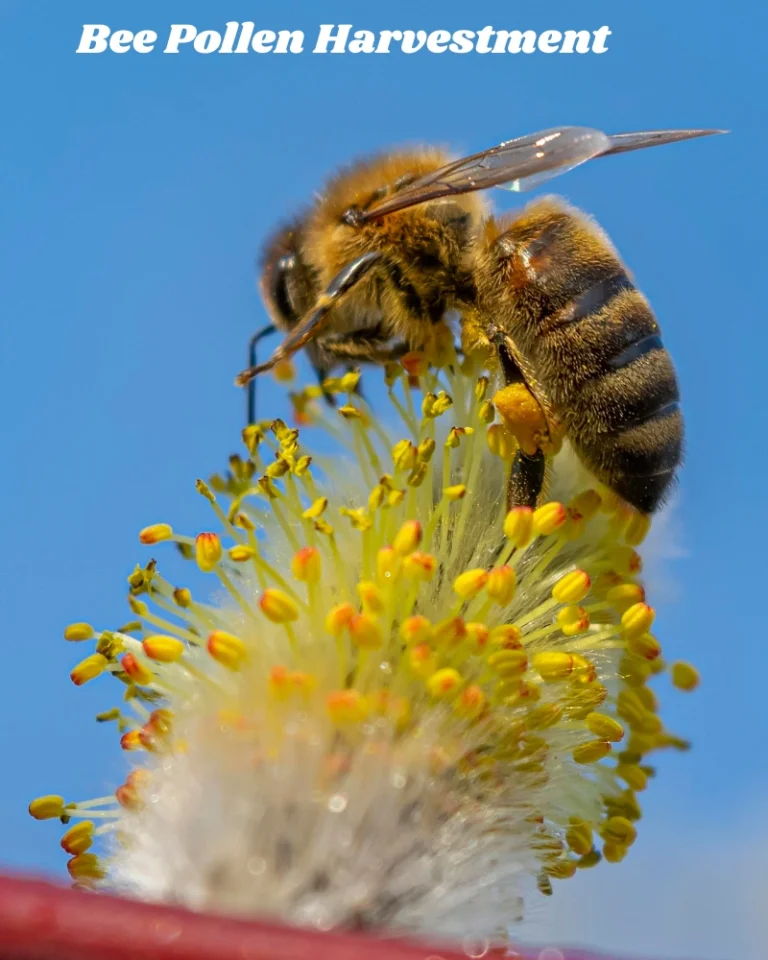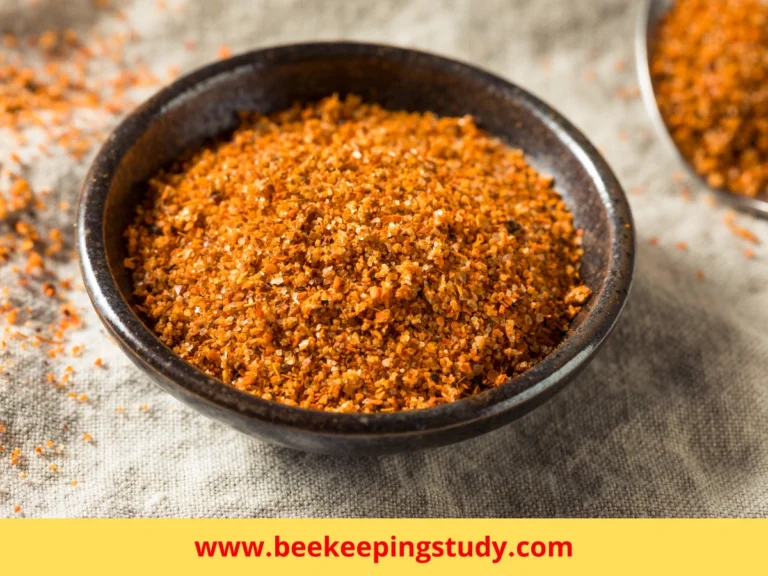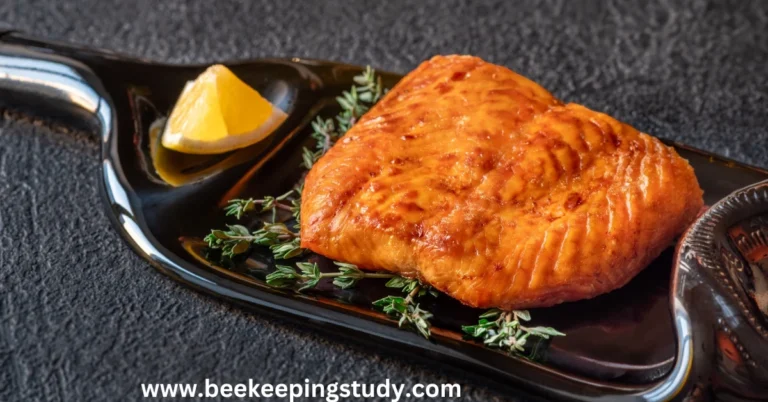This post might be created with help from AI tools and carefully reviewed by a human (Anthor Kumar Das). For more on how we use AI on this site, check out our Editorial Policy.
5 Steps Honey Moonshine Recipe
Making your own moonshine can be a rewarding and fun project. Adding honey to the mix gives it a unique sweetness that sets it apart from other homemade spirits.
In this article, I will walk you through the steps of creating a delicious honey moonshine recipe that you can enjoy and share with friends.
⚠️ Note: Before moving forward, please take note that this article is for educational and informational purposes only. BeekeepingStudy does not promote, sell, or support the production or use of alcohol.
Making alcohol at home can be illegal without the proper permits, depending on where you live. Please check and follow all local, state, and national laws before attempting anything described here.
We encourage safe, legal, and responsible practices at all times.
Understanding Honey Moonshine
Moonshine is a type of homemade distilled alcohol that has its roots in traditional, often illicit, production. Today, however, many hobbyists legally make moonshine at home in regions where it’s permitted by law.
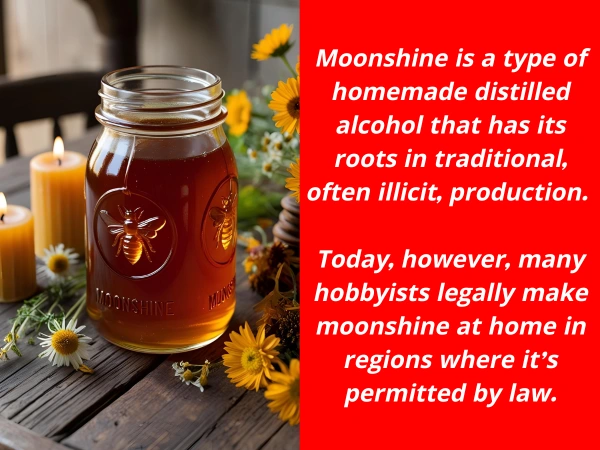
The basic process involves fermenting a sugar source to produce alcohol, followed by distillation to increase its strength. When you use honey as part of the mix, it not only adds sweetness but also brings in natural floral and aromatic notes, giving the final product a smoother, more distinctive flavor.
Ingredients and Equipment for the Honey Moonshine Recipe
Before getting started, make sure you have everything you need on hand. Clean and sanitize all equipment thoroughly to avoid contamination during the process.
Ingredients
- 10 pounds sugar
- 1 gallon honey
- 5 gallons water
- 2 packets of distiller’s yeast
- Optional: fruit or spices for added flavor
Equipment
-
Large fermentation vessel
-
Airlock
-
Heat source (stove or hot plate)
-
Long stirring spoon
-
Hydrometer
-
Thermometer
-
Distillation apparatus (still) — Only if legal in your area
-
Collection jars or bottles
⚠️ Note: Distillation may be regulated or prohibited in some areas without a proper license. Always check your local laws before using any distillation equipment.
Ensure you have all the necessary equipment and ingredients before starting the process. Clean and sanitize your equipment to prevent contamination.
Step-by-Step Honey Moonshine Recipe
When you have all the ingredients in hand it’s time to make the moonshine. You will need only 5 steps for that.
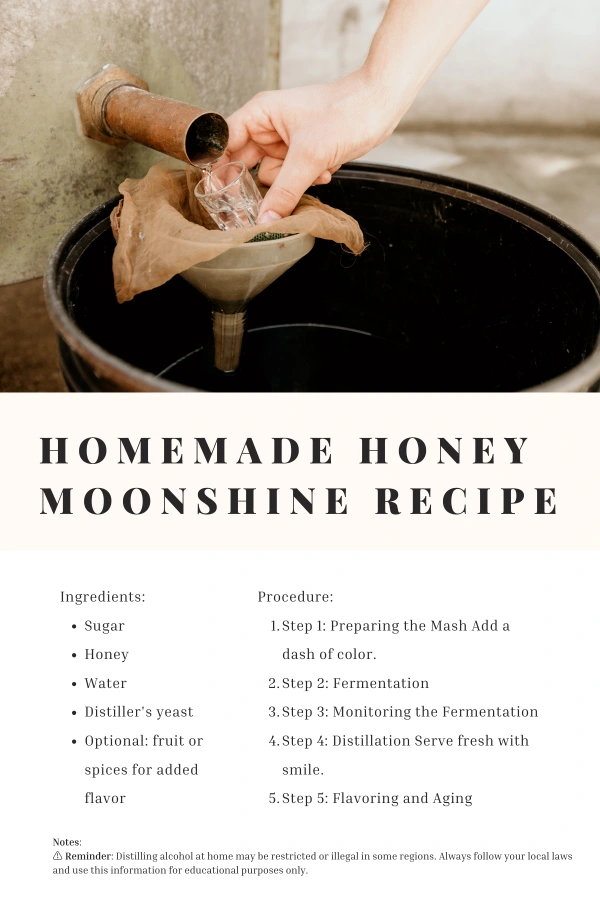
Step 1: Preparing the Mash
- Start by heating the water in your fermentation vessel to about 160°F (71°C).
- Add the sugar and honey, stirring until fully dissolved — this mixture is known as the mash.
- Once everything is dissolved, let the mash cool to around 70°F (21°C) before moving to the next step.
Step 2: Fermentation
- When the mash has cooled, add the distiller’s yeast and stir gently to distribute it evenly.
- Cover the vessel and attach an airlock to allow gases to escape while keeping contaminants out.
- Store the vessel in a dark, warm place and let it ferment for about 7–10 days. During this time, the yeast converts the sugars into alcohol.
Step 3: Monitoring the Fermentation
- Check the mash daily.
- Use a hydrometer to monitor the specific gravity — once it remains stable for two days in a row, fermentation is complete.
- The mash should smell slightly sweet and alcoholic at this stage.
Step 4: Distillation
Once fermentation is done, the next step is distillation, if legal in your area. If it actually legal under your local laws, then move forward:
- Carefully set up your distillation apparatus following all safety guidelines.
- Pour the mash into the still, avoiding any sediment at the bottom.
- Heat the mash slowly and begin collecting the distillate in small jars.
- Discard the first few ounces (the “foreshots”), as they may contain methanol or other harmful compounds.
- Continue collecting until the alcohol content drops significantly, as measured by a proofing tool or alcohol meter.
⚠️ Reminder: Distilling alcohol at home may be restricted or illegal in some regions. Always follow your local laws and use this information for educational purposes only.
Step 5: Flavoring and Aging
After distillation, you can enjoy the moonshine as is, or enhance its flavor by adding fruit or spices. If you prefer a smoother, more mature flavor, consider aging the moonshine in a glass jar or oak barrel for several weeks to months. This will mellow the harshness and allow the flavors to develop.
Safety Considerations
Making moonshine involves working with high-proof alcohol, heat, and potentially flammable vapors, so safety should always be your top priority.
-
Always work in a well-ventilated area to avoid the buildup of alcohol fumes.
-
Keep a fire extinguisher nearby, just in case.
-
Never leave the distillation process unattended, and regularly check that all connections in your still are tightly sealed to prevent leaks.
-
If anything smells strange or “off,” play it safe — discard any questionable distillate.
-
Most importantly, improperly made alcohol can be dangerous to consume, so follow instructions carefully and prioritize both safety and legality.
⚠️ Reminder: Distillation may be illegal without the proper permits in many areas. Always follow your local laws and regulations.
FAQs
Is it legal to make moonshine at home?
The legality of making moonshine depends on where you live. In the United States, for example, it's illegal to distill spirits at home without the proper federal permits, even for personal use. Always check your local, state, or national laws before getting started.
Can I use different types of honey?
Absolutely! Different types of honey can create unique flavors. Try clover, wildflower, orange blossom, or even darker honeys like buckwheat to experiment with taste and aroma.
How do I know when fermentation is complete?
Use a hydrometer to measure the mash's specific gravity. When the readings are consistent for two days in a row, fermentation is likely done. You'll also notice a slightly alcoholic smell.
Why should I discard the foreshots?
The foreshots (the first few ounces of distillate) can contain methanol and other toxic compounds. These are unsafe to consume, so they should always be discarded for safety.
Can I age moonshine in a glass jar?
Yes! Aging in a glass jar can help mellow the flavors over time. You can also add oak chips, spices, or dried fruit for extra complexity if you like.
What if my moonshine smells or tastes “off”?
If it smells or tastes bad, don’t risk it. Off flavors or odors may indicate contamination or improper fermentation/distillation. It’s always better to discard questionable batches than risk your health.
Conclusion
Making honey moonshine at home can be a fun and rewarding hobby, resulting in a flavorful, one-of-a-kind spirit. By following this guide carefully, you’ll learn the traditional process of crafting a sweet, honey-infused beverage — all while gaining insight into fermentation and distillation techniques.
Always remember: safety and legality come first. Be sure to follow all local laws and handle every step of the process responsibly. When done properly, honey moonshine can be a unique way to explore the art and science behind homemade spirits.
Don’t forget to rate this honey moonshine recipe. Also, share your feedback through comments.
The following articles might be helpful for you too:
- 3 Ingredients Easiest Weight Loss Drink Recipe.
- 4 Steps Simple Hot Honey Chicken Tenders Recipe.
- 4 Easy Steps Honey Caramel Recipe


